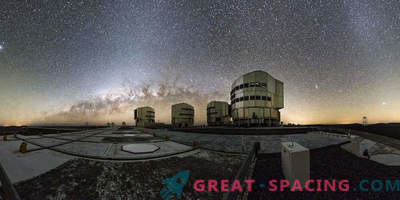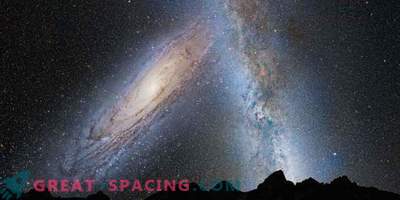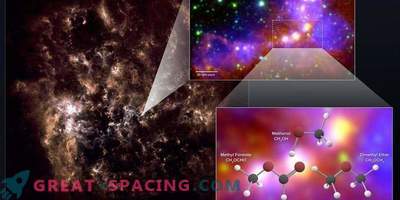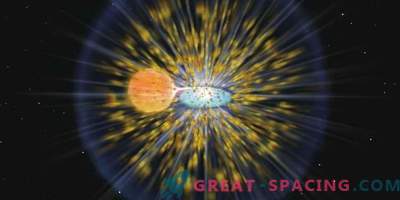
A study from the Canary Institute of Astrophysics proves the presence of probable organic molecules in galaxies beyond the Milky Way. Spectroscopic analysis using the MUSE instrument on the Very Large Telescope (Chile) confirmed the existence of diffuse interstellar bands (DIB) in Antenna galaxy (NGC 4038), located at a distance of 70 million light years from us. This proves that organic material can be found outside our galaxy.
The electromagnetic spectrum of a celestial object is the result of the destruction of the emitted light into its composite colors. The characteristics of this spectrum reveal the properties of an object, such as speed relative to the Earth, and chemical composition. In addition, in this way you can learn about the material located in the interstellar medium. DIB - dark stripes that appear in the spectra of astronomical objects associated with this medium, and whose origin is still a mystery. They can not yet be explained by the presence of known simple molecules. It is believed to be caused by a material that is organic.
Most of the research related to DIB was limited to objects of the Milky Way, because these are incredibly weak spectral features. But outside of our galaxy they fixed DIB, mainly in the Magellan Clouds. These are members of the Local Group, but it would be interesting to find out how DIBs behave in high-energy interstellar environments. Observations outside the galaxies around us will provide additional data on the possible nature of the molecules that cause DIB. They can also be instruments for scientists characterizing the interstellar medium.
The new paper explored the potential of using integral field spectrographs, such as HARMONI (intended for the future 39-meter E-ELT telescope). Now they used the MUSE device on the Very Large Telescope to obtain information from the Antenna spiral galaxy.
MUSE receives a huge number of spectra of a relatively large area in the sky with one inspection. Based on the addition of a signal from neighboring spectra, careful modeling and separation of radiation from stars and ionized gas in the system, we managed to capture the signal from two of the most well-known DIB.











































